Planning a trip to Budapest? This charming city on the Danube is full of culture, history, and architectural beauty. Whether you’re visiting for the views from Fisherman’s Bastion, the warm waters of the thermal baths, or the buzzing ruin bars, there’s so much to see and enjoy.
In this travel guide, I’m sharing the best things to do in Budapest, including famous landmarks, hidden gems, delicious food spots, and travel tips to help you make the most of your visit. Whether you’re here for a weekend getaway or a longer stay, this list will help you discover the city’s highlights and find your own favourite corners.
In This Blog
Things to Do in Budapest
Budapest is one of Europe’s most interesting cities, known for its rich history, dreamy architecture, and atmospheric streets. The Danube River splits the city in two: Buda, with its hills, castles and peaceful neighbourhoods; and Pest, home to lively cafés, nightlife, and elegant boulevards.
This guide takes you through the top things to do in Budapest, from iconic sights and thermal spas to cultural spots and scenic walks.
Fisherman’s Bastion



With its fairytale towers and sweeping views over the city, Fisherman’s Bastion is one of the top places to visit in Budapest. Located high on Castle Hill in the Buda district, this beautiful white-stone lookout is instantly recognisable and (mostly) free to visit.
The bastion was built in the early 1900s to celebrate Hungary’s 1000th birthday and features seven towers representing the Magyar tribes that founded the country. Despite its medieval look, it was designed purely for decoration, and the views are what make it really special. From here, you’ll see the iconic Hungarian Parliament Building, the Danube River, and the rooftops of Pest in one stunning panorama.
Arrive early: before 08:30 is ideal, especially if you want peaceful photos without the crowds (it can get really busy). But at sunrise, it’s even more magical
Free to enter: most of the terraces are open to all, only a small upper section charges a fee during the day (1,000 HUF from 09:00 to 19:00)
Getting there: take the funicular up from the Buda side, hop on bus 16, or walk up – it’s uphill but scenic and takes around 30 minutes from the city center
Buda Castle Funicular
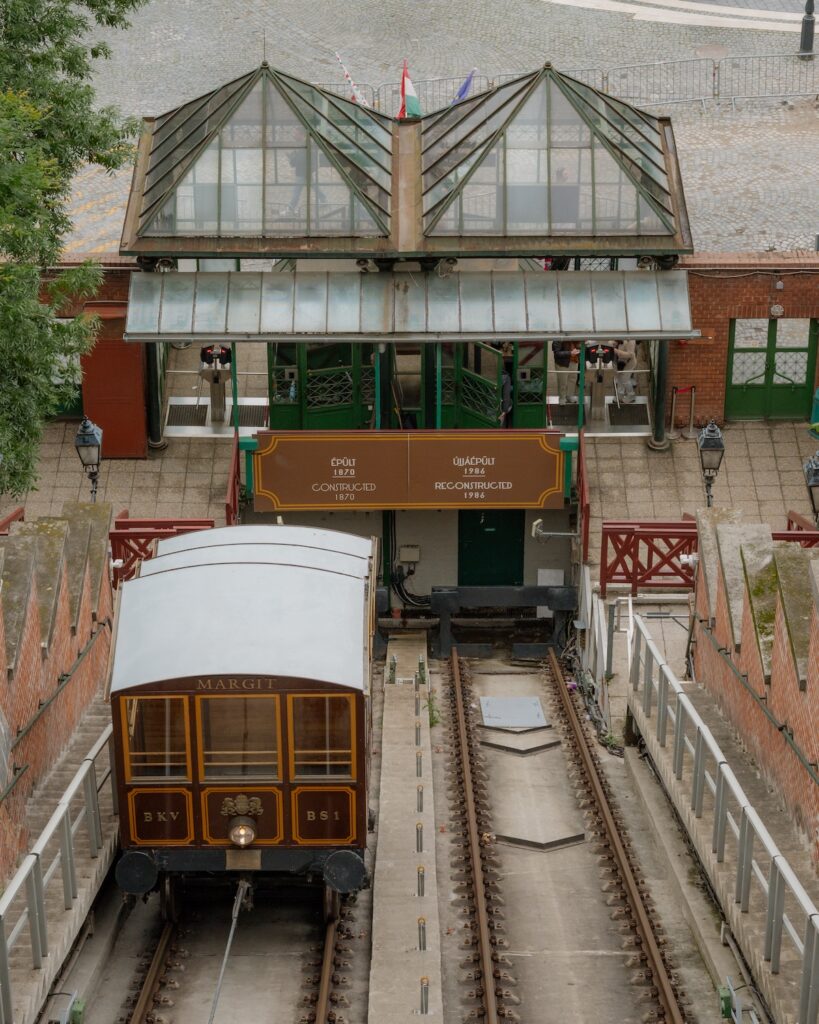
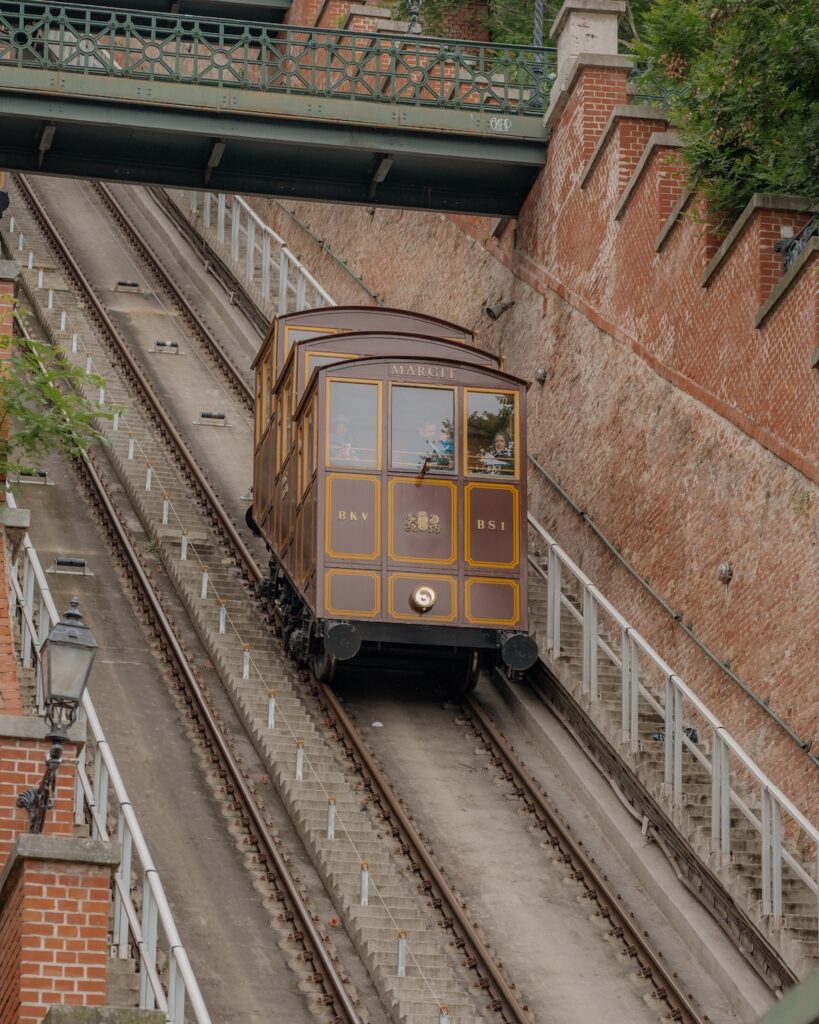

Connecting the Chain Bridge with the top of Castle Hill, the Buda Castle Funicular offers a charming and nostalgic ride dating back to 1870. It’s one of the oldest funiculars in the world and provides a unique way to reach the historic Buda Castle District while enjoying the scenic views along the way.
At the top, you’ll find the Buda Castle complex, home to the Hungarian National Gallery, the Budapest History Museum, and a terrace with amazing views. The ride may be short, but it’s a memorable experience that sets the tone for exploring this UNESCO World Heritage Site.
Opening hours: 08:00–22:00, with a new ride every 5–10 minutes depending on how busy it is.
Tickets: 5,000 HUF for a return ticket (adult). Buy your ticket at the station entrance
Tip: arrive early to avoid queues and enjoy the morning light over the Danube.
St Stephen’s Basilica


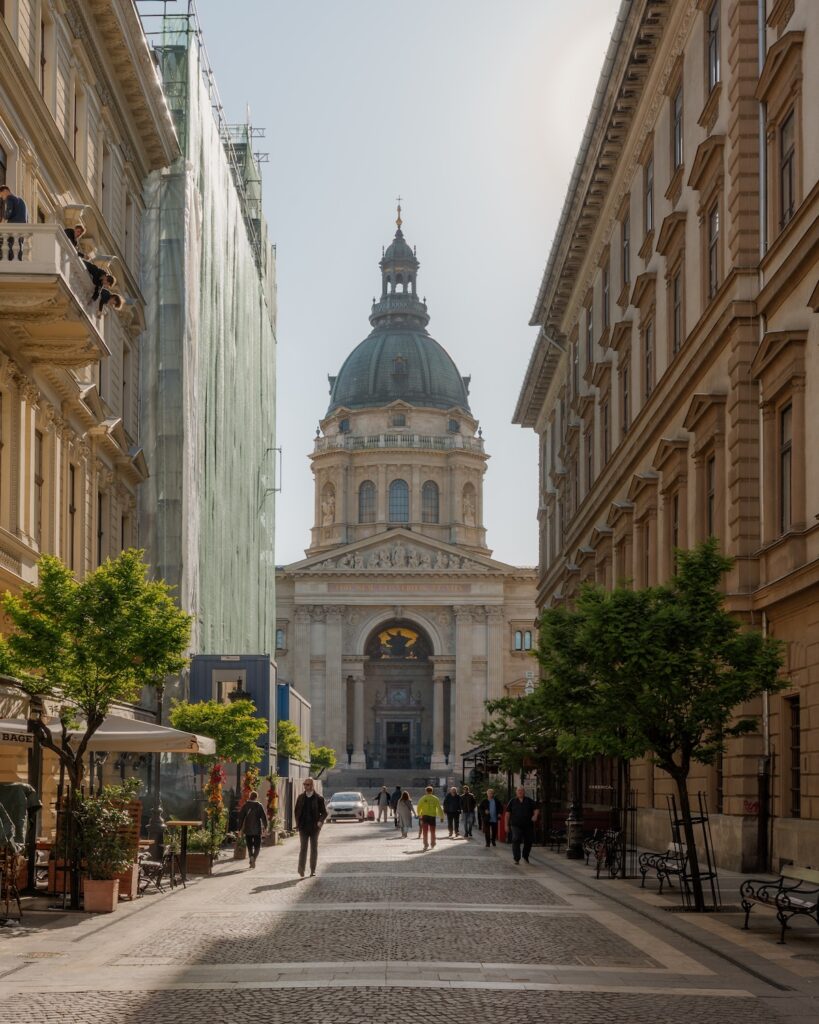
Named after Hungary’s first king, St. Stephen’s Basilica is a stunning neoclassical church located in the heart of Pest. Completed in 1905, the basilica features ornate marble interiors, mosaic artwork, and a dome that rises 96 metres above the city. Visitors can climb (or take a lift) to the dome’s viewing platform for one of the best panoramic views of Budapest. Inside, don’t miss the preserved right hand of King Stephen, displayed as a relic in a side chapel.
Tickets: get your tickets to St. Stephen’s Basilica in advance
Bonus: some of the prettiest photo spots of the basilica are from nearby streets like Lázár utca (first photo) and Zrínyi utca (third photo)
Fun fact: no building in Budapest is allowed to be taller than St. Stephen’s Basilica. Its dome reaches 96 metres, the same height as the Hungarian Parliament Building. Both symbolise the balance between church and state
Hungarian Parliament


The Hungarian Parliament Building is one of the most striking sights in Budapest. Sitting along the Danube, it’s impossible to miss. With its grand dome, pointed spires, and symmetrical façade, it’s often compared to London’s Westminster, and for good reason: it was designed with it in mind.
Completed in 1902, the building has nearly 700 rooms and is the tallest in the city, matched only by St Stephen’s Basilica. This height limit was intentional, symbolising the balance between religion and state.
To see the interior, including the Hungarian Crown Jewels, it’s best to join a guided tour. For unforgettable views of the building itself, head across the river to around Batthyány Square or take a Danube river cruise.
Tickets: get your Parliament tickets in advance
Central Market Hall


Built in 1897, the Great Market Hall is the oldest and largest indoor market in Budapest. Located near the Liberty Bridge, it’s a colourful and lively place to discover Hungarian food, spices, and souvenirs. The ground floor is filled with fresh produce, meats, cheeses, and paprika, while the upper level offers traditional Hungarian snacks and handcrafted gifts.
This is the perfect place to try a lángos (fried dough topped with sour cream and cheese) or pick up some authentic Hungarian souvenirs to take home. Arrive early to avoid the crowds and enjoy a more relaxed experience.
Metropolitan Ervin Szabó Library
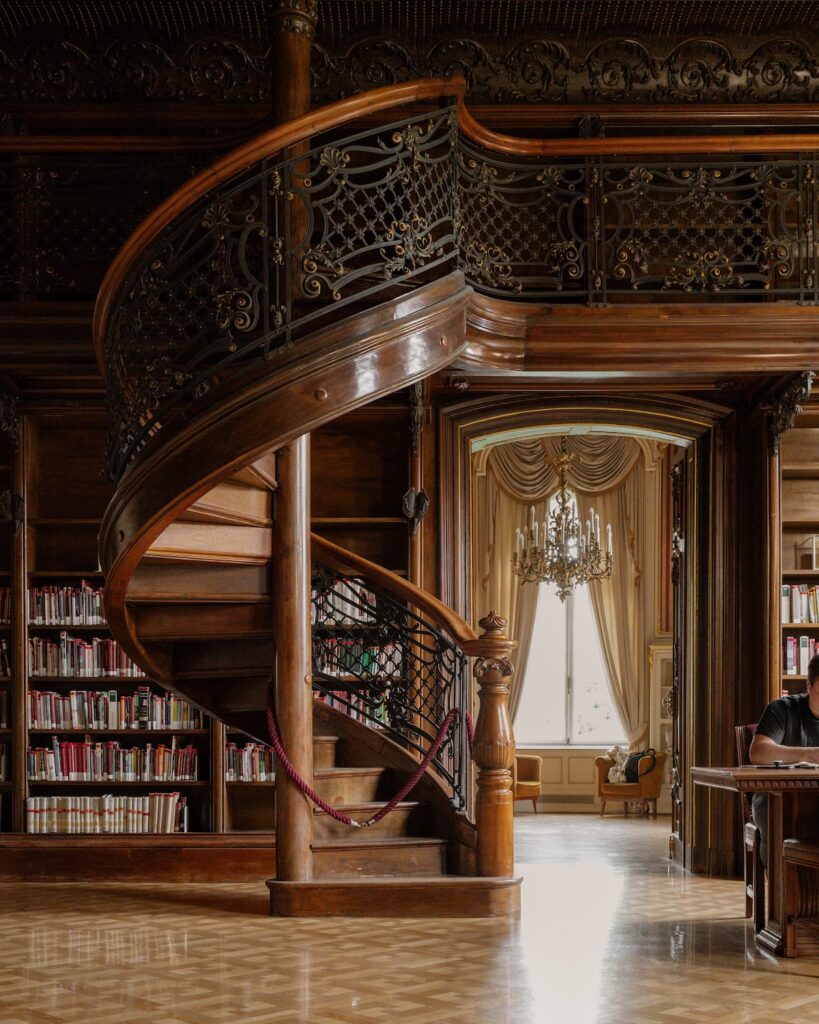
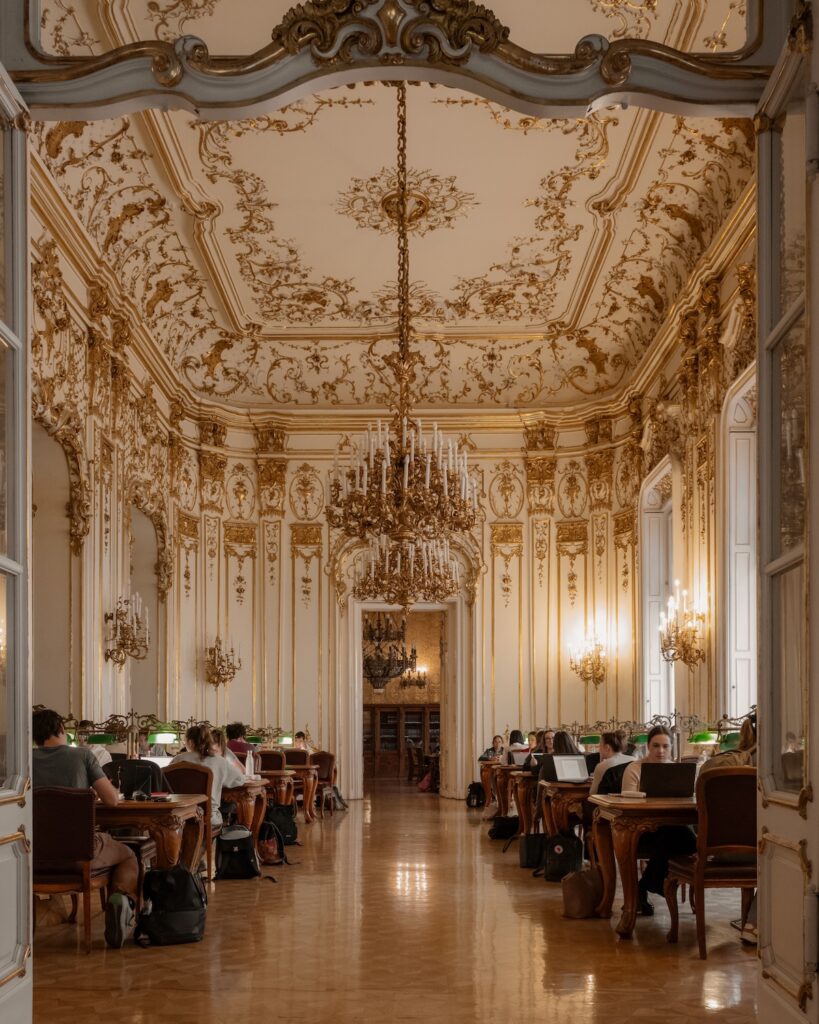

This might just be one of the most beautiful libraries in Europe. Located in a 19th-century palace, the Metropolitan Ervin Szabó Library looks more like a stately home than a public library. The ornate reading rooms on the fourth floor are full of chandeliers, wood panelling, and antique furniture, it feels like stepping back in time.
Tickets: 4,000 HUF per person, tickets can be bought at the entrance
Opening hours: open from 10:00, closed on Sundays
Tip: go early in the day for quiet photos, and remember to stay quiet as it’s an actively used library with hard-working students
Liberty Bridge


The Liberty Bridge is one of Budapest’s most charming river crossings. Built for the 1896 Millennium Exhibition, the green-painted bridge has intricate ironwork and mythical Turul bird statues. It connects Gellért Hill to the Central Market Hall and is a favourite spot for both locals and visitors.
On warm evenings, you might spot people sitting on the bridge’s beams enjoying the view, a drink, and the sunset. It’s also a lovely walking route, especially if you plan to explore Gellért Baths or the cafés near Fővám Square.
Chain Bridge
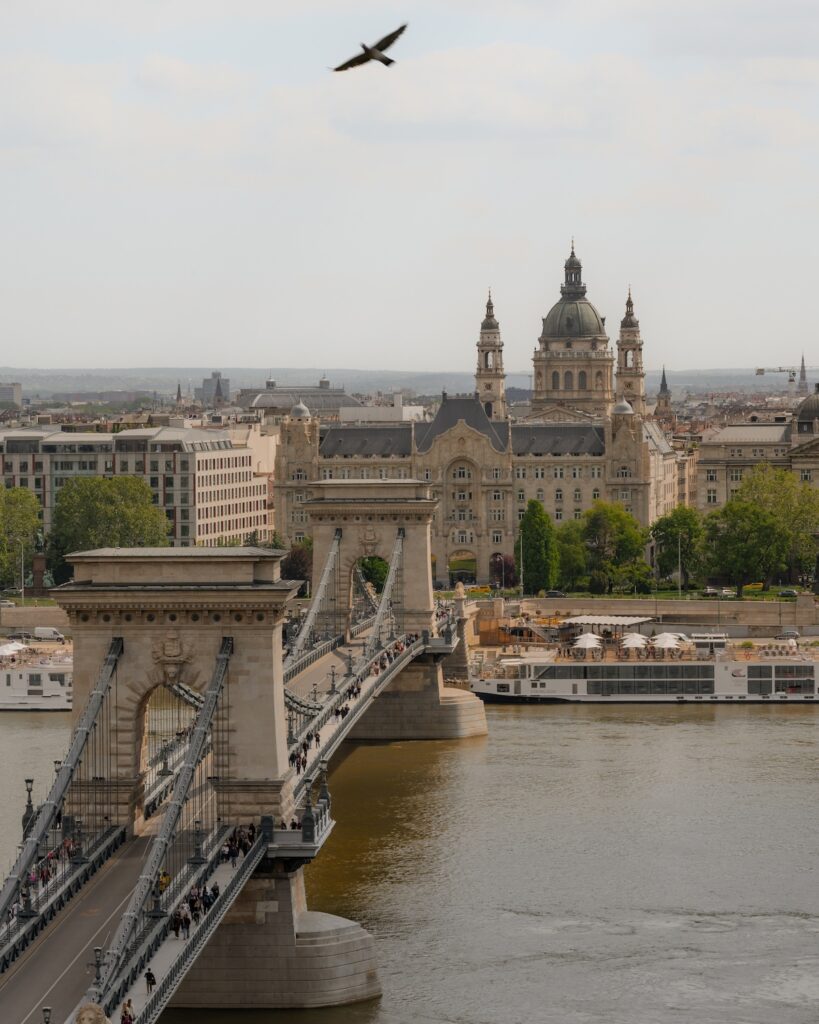
The Chain Bridge (Széchenyi Lánchíd) is Budapest’s most famous bridge and was the first to permanently connect Buda and Pest. It’s especially beautiful at night when it’s all lit up and reflected in the Danube.
Tip: you can find this view on the top of the Castle Funicular
Vajdahunyad Castle

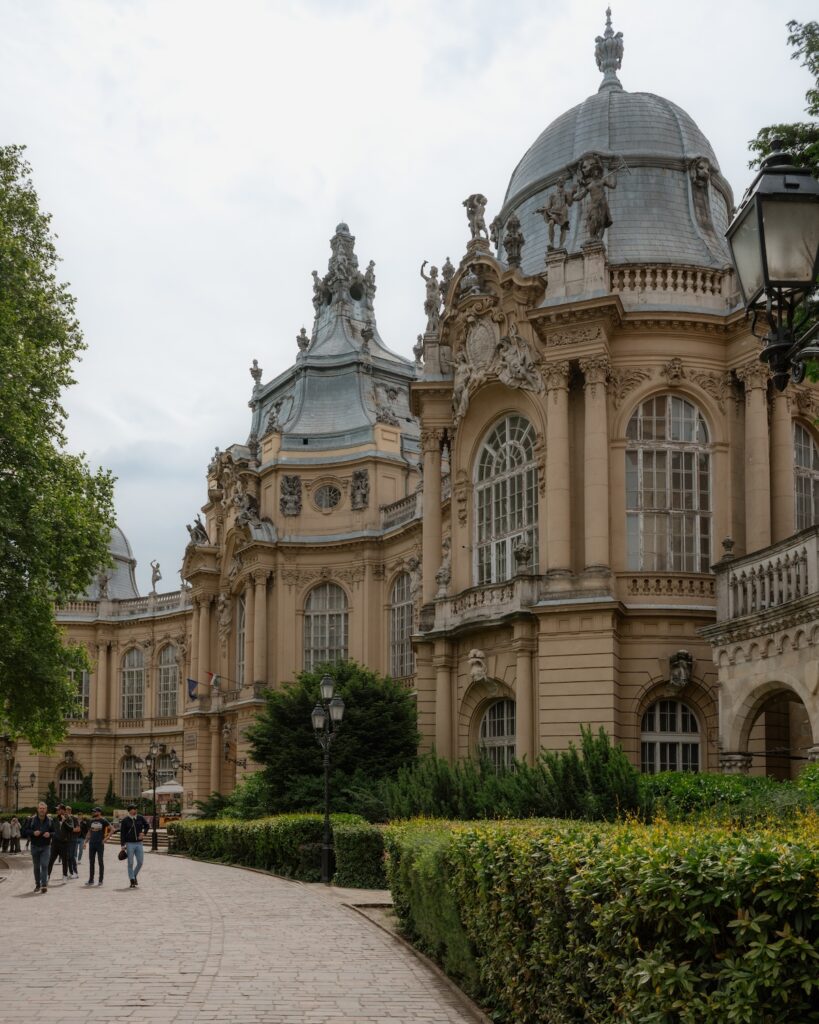

Tucked away in City Park, Vajdahunyad Castle looks like it belongs in a fairytale. Originally, the castle was made from wooden planks and cardboard designs for the 1896 Millennial Exhibition. Because it became so popular, it was rebuilt from permanent materials between 1904 and 1908 and showcases styles from Romanesque to Gothic and Baroque.
Today, the castle houses the Museum of Hungarian Agriculture, the biggest agricultural museum in Europe. The castle reflects Hungary’s architectural heritage and is surrounded by a tranquil lake, which becomes a charming ice rink in winter. Unless you tour the Museum of Hungarian Agriculture, which is located inside, you really don’t need much time to experience Vajdahunyad. Once you arrive at the gatehouse, you can experience it all in 10-15 minutes.
Thermal Baths
Spas in Budapest
No trip to Budapest is complete without visiting one of its historic thermal baths. Thanks to natural hot springs beneath the city, locals have been enjoying the healing waters since Roman times.
Széchenyi Baths, with its grand Neo-Baroque architecture, is the largest and most popular, especially for its outdoor pools that steam in winter. Gellért Baths, housed in a beautiful Art Nouveau building, is a visual delight with stained glass and mosaics. For a more atmospheric and traditional experience, try Rudas Baths, originally built in the 16th century during the Ottoman era. It even has a rooftop pool with a view of the Danube.
Tip: bring flip-flops and a towel
Fun fact: with over 100 natural hot springs and more thermal baths than any other capital city, Budapest is the thermal capital of the world
Boat Cruise on the Danube


One of the most magical ways to see Budapest is from the water. A Danube River cruise at sunset offers front-row seats to the city’s illuminated landmarks, including the Parliament Building, Buda Castle, and the bridges that link the two halves of the city.
We did the unlimited prosecco sunset cruise, and it was a highlight of our trip! It lasts just over an hour and it’s a relaxed and romantic way to end a day of sightseeing, and a fantastic opportunity for evening photography. Don’t worry, they have alcohol-free options too!
Ruin Bars


Ruin bars are one of the most unique attractions in Budapest. They first popped up in the early 2000s in the old, crumbling buildings of the Jewish Quarter, and they’ve been growing in popularity ever since. What started as an underground concept has become a quirky, creative part of the city’s nightlife.
The most famous (and oldest) is Szimpla Kert, a huge space with colourful rooms, open-air courtyards, and a mix of vintage furniture, street art, and odd decorations. It’s definitely touristy these days, and not really a place locals hang out anymore, but worth seeing if you like unusual places with a fun, laid-back vibe.
Where to Eat & Drink in Budapest
Hungarian food is rich, warming, and full of flavour. Expect plenty of paprika, tender meats, and comforting stews. Make sure to try dishes like gulyás (goulash soup), chicken paprikás with nokedli (small dumplings), and slow-cooked pork or beef stews. For street food, grab a lángos (deep-fried dough topped with sour cream and cheese) or a sweet kürtőskalács (chimney cake), best enjoyed warm from a market stall or bakery.
Brunch or coffee

Whether you’re fuelling up for a day of sightseeing or taking a break between museums, Budapest has a brilliant café scene. These are some of our favourites:
- Deszka: one of our top picks for breakfast or brunch. The food, drinks, and atmosphere were all perfect!
- Pine – Coffee & More (pictured): this newer café is perfect for a slow morning. The minimalist design and top-quality coffee make it a lovely place to unwind.
- 9BAR: located near the city centre, this small café serves great coffee and simple, tasty breakfasts.
- The Goat Herder: a laid-back café perfect for lunch or a small break. Their toasts are delicious, and the vibe is welcoming.
- Artizán Bakery: we loved this spot for their delicious lunch and fresh pastries.
- Csészényi Café and Coffee Bean Roaster: a tiny spot with great coffee and knowledgeable baristas. Good for coffee lovers looking for quality beans and quiet vibes.
- Grumpy Food Bar Coffee: a fun, slightly quirky café with good food and drinks in a relaxed setting.
- Blueberry Brunch: known for its generous brunch plates and sweet treats. Very popular, so try to go early if you can.
- Partisan Coffee Shop: a cool, design-led café with excellent espresso-based drinks and a few sweet snacks.
Dinner
Budapest has a great mix of traditional Hungarian restaurants and more modern, international spots. Here are a few to check out:
- Retek Mini: a lovely little restaurant serving authentic Hungarian food in a cosy setting. It’s a great place to try classic dishes like goulash without the touristy feel.
- Mazel Tov (pictured): set in a stylish space, this is a popular choice for dinner with a Middle Eastern twist. The food is fresh and flavourful, and the atmosphere is lively. It can get busy, so booking ahead is a good idea.
- Arquitecto Pitpit: especially the cosy courtyard is perfect for a summer evening filled with tapas.
- Parasztkonyha Restaurant: a traditional-style eatery serving hearty Hungarian fare. It’s simple and rustic, but portions are generous and the prices are fair.
- Meshuga: a fun, contemporary spot with bold flavours and modern design. Great for something a little different, especially if you like playful menus and inventive twists.

Map of Budapest
To make your trip planning easier, I’ve put together a custom map with all the highlights mentioned in this blog, from must-see sights and pretty viewpoints to cosy cafés, brunch spots, and dinner recommendations.
You can save it to your phone and use it offline while you explore Budapest. It’s a handy way to keep everything in one place!
How to Visit Budapest
Budapest has its own international airport (BUD) with flights to and from many destinations. From the airport, it takes around 35 minutes by bus (bus 100E) to reach the center of the city. A single ticket is 2,200 HUF and can be bought on ticket machines by the buses, with your bankcard onboard the bus, or on the BudapestGO App. The bus leaves around every 10 minutes.
Find flights to Budapest
You can also reach Budapest easily by train or car. Budapest Keleti station is the largest and busiest train station, which is just outside of the main city center.
Get your train tickets in advance
How to Get Around Budapest
Budapest is a walkable city, especially if you stay centrally. Most major sights are easy to reach on foot, and exploring this way lets you soak up the city’s charm.
For longer distances, public transport is efficient and affordable, with trams, buses, and metro lines covering the entire city.
Download the BudapestGO app for real-time schedules, route planning, and purchasing tickets
Consider getting a Budapest Card if you’re planning to visit several attractions and use public transport often, it includes free travel and discounts at museums and restaurants
When to Visit Budapest
Each season in Budapest has its own charm, so the best time to visit depends on your travelling style:
Spring
7°C – 20°C
Mild and fresh, with flowers in bloom and fewer crowds. A great time for sightseeing, riverside walks, and outdoor cafés.
Summer
16°C – 28°C
Expect long sunny days and lots of festivals. It can get hot and busy, but there’s a fun buzz in the air. Great for rooftop bars and evening strolls along the Danube.
Autumn
8°C – 20°C
Beautiful autumn colours and fewer tourists. September often still feels like summer, while late autumn brings a chill and cosy café vibes.
Winter
-3°C – 5°C
Cold but magical, especially during the festive season. Snow-dusted rooftops, Christmas markets, and warming up in one of the city’s famous thermal baths.
Where to Stay in Budapest
We recommend staying on the Pest side, particularly in Belváros (the inner city). It’s central, walkable, and full of cosy cafés, restaurants, and shops. You’ll also be close to the Danube, public transport, and many of Budapest’s top sights. Here’s a list of our favourites:






